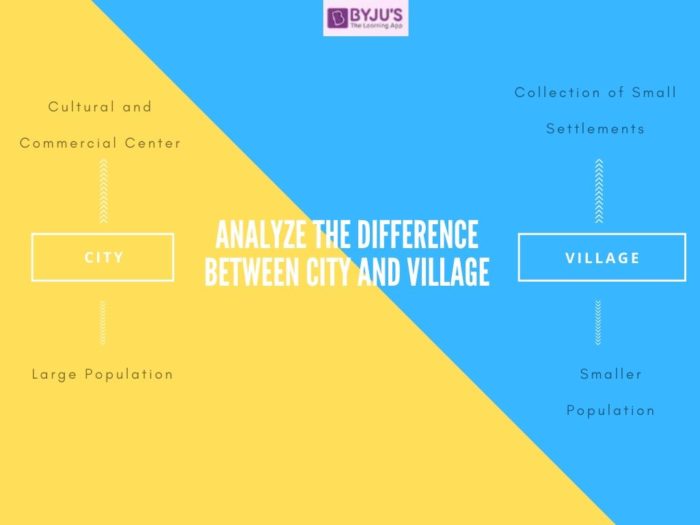Human settlements in today’s era are complex as they have evolved and expanded to move beyond conventional definitions.
This article will be highlighting the key differences between the two types of human settlements: City and Village.
A city can be defined as a permanent settlement with administratively defined boundaries whose denizens are engaged in primarily non-agricultural tasks.
A village, on the other hand, is a cluster of human settlements often located in rural areas with a typically smaller population

Further differences between a City and Village will be elaborated upon within the context of the IAS Exam
Differences between City and Village
| City | Village |
| A city is an important centre of commerce and culture with its own local laws and a well-defined housing, transport and sanitation systems | Villages are small groups of human settlements that comprise of permanent residences located close together for better cohesion and socialization of their inhabitants |
| A city will be large enough to cover a wide area of land | A village will only cover a small area of land |
| As per the Census of India, a settlement having a population of 4 million and above is designated as a city, and at least 75% of the male working population must be engaged in non-agricultural activities |
As per the Census of India, there are 3,961 villages which have a population of 10,000 persons or more |
| The 2011 Census of India states that about 377 Million, about 31.16% of the total population, live in cities | As per the 2011 Census of India, about 83 crore of the total population lives in villages |
| The conventional view is that the first cities began to form around the Neolithic era (10,000–4,500 BC). Examples of early cities are Sumer, Ur and the cities of the Indus Valley Civilization | Villages began to appear in the early stages of human history, most likely after the Stone-Age era. |
Cities and Villages are topics covered under Sociology, which is an optional subject in the UPSC Mains Exam. To study more from this segment, visit the following links
- Sociology Optional for UPSC Mains
- Strategy for UPSC Sociology
- UPSC Sociology Syllabus
- Difference Between Sociology and History
- Difference Between Sociology and Economics
- Difference Between Urban and Rural
Aspirants can find more Difference Between Articles, by visiting the linked page
Difference between City and Village- Download PDF Here
Frequently Asked Questions about City and Village
What is the definition of a City?
What is a village?
Become familiar with the general pattern of the IAS Exam by visiting the IAS 2021 Syllabus page. For more exam-related preparation materials, refer to the links given in the table below:
Related Links
| NCERT Books Free Download | UPSC Exam Pattern | NCERT Notes for UPSC 2023 |
| Intangible Cultural Heritage | Indian Personalities | PIB Summary and Analysis |
| Biological Weathering | Safety Valve Theory | WPI Index |
Comments